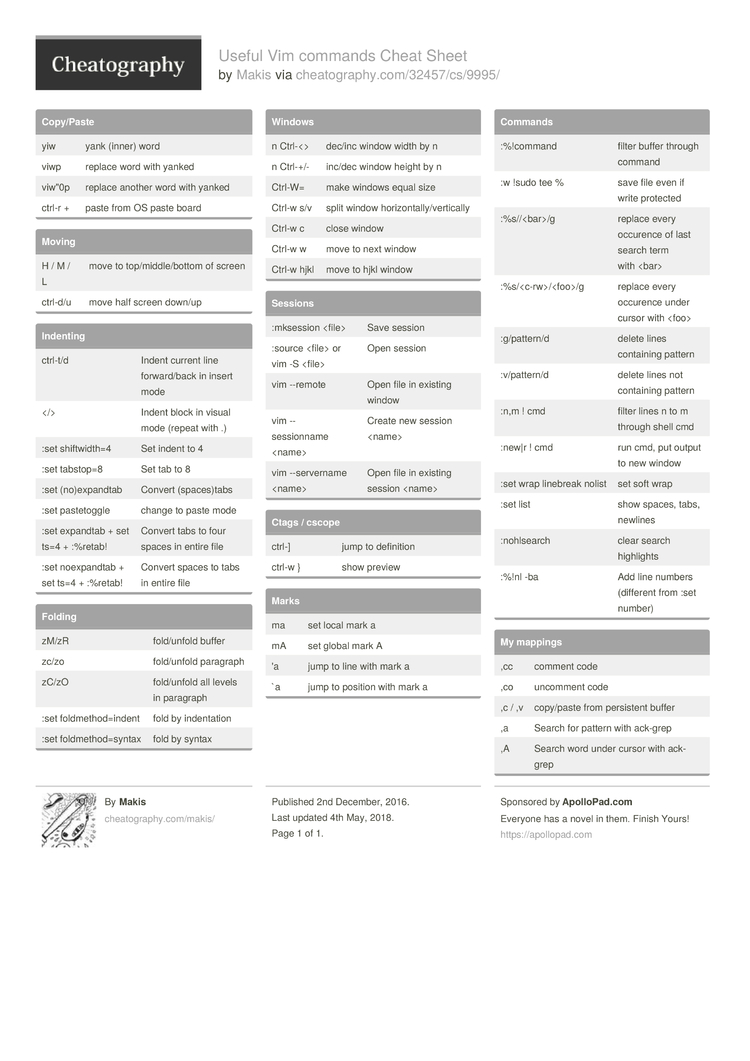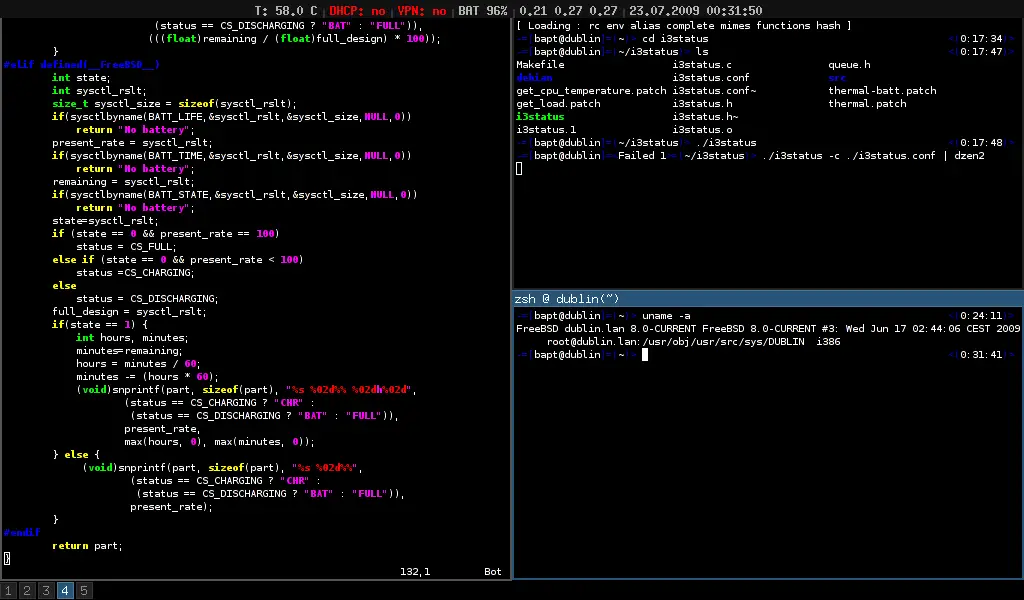- As with Adobe Acrobat, Nitro PDF Pro's reader is free; but unlike Adobe's free reader, Nitro's free reader allows PDF creation (via a virtual printer driver, or by specifying a filename in the reader's interface, or by drag-'n-drop of a file to Nitro PDF Reader's Windows desktop icon); Ghostscript not needed.
- See more results.
- Zathura: PDF Viewer with vim keybindings; feh: Image viewer with vim keybindings. Neomutt: Terminal Mail Client with vim keybindings. NewsBoat: Terminal RSS feed reader with vim keybindings. Torque: Terminal torrent manager with vim keybindings. Alacritty: My terminal of choice comes with vim keybindings. Urlscan: Terminal Url Scanner.
- I am trying to define a keymapping in vimrc to compile my markdown file with Pandoc. So I am using this: autocmd FileType markdown nmap:!pandoc% -o%:r.pdf. But, in markdown file when I am pressing F9 nothing is happening. I am not sure if this is the line I need to add in my vimrc file. Right now I don't want to install any.
 gorky wrote:
gorky wrote:I use zathura, because it fits perfectly into awesome wm - no unnecessary borders, tabs and so on. The second - and probably the most important - feature is its auto-refresh.
As I work primarily with LaTeX, a pdf viewer without auto refresh is much less usable.

This is what I used to think, but I've changed my mind. If you have xdotool installed, you can have your LaTeX compilation script call...
Vimahk on GitHub is a script for Autohotkey. Install Autohotkey, then clone the vimahk repo and put vim.ahk and the lib folder into you sharedTools folder. Then make shortcuts and put into your startup folder: The default for vimahk is to map to many apps: I only use mappings for OneNote as I have separate bindings for VSCode and Visual.
... if it is successful in compiling. That sends the 'r' key as input to MuPDF, which refreshes it. That's (IMHO) better than an auto-refresh, and never tries to update when it shouldn't.
In fact, I now have gvim set up with an autocmd to save, compile LaTeX and update MuPDF in such a way that the preview live-updates as I type. It emulates gummi, but with an editor that doesn't suck. I tried to make this work with Zathura, but if a compilation failed, Zathura would get stuck because of the corrupted PDF and stop auto-updating. But with the above, MuPDF only refreshes when the compilation was successful, so it never tries to load a corrupted PDF.
(It sorta works with Evince's autoupdate, since it doesn't get 'stuck' the way Zathura does, but it goes much slower, since it's a much heavier program than MuPDF.) MuPDF is the only thing fast enough to 'almost' keep up with the source screen.
Last edited by frabjous (2010-10-20 21:14:22)
![[Solved] [Solved]](https://i.stack.imgur.com/Sn1y5.png)
Thanks, I guess I will be using the binary look approach from now on.
See Full List On Dev.to
iBertus:
Yes I'm picky. I'm very easily annoyed by irritating things when it comes to applications. So I'm striving for perfection.
apaige:
Bloted or not. When it comes to rendering pages, Acreread does it twice as fast as Xpdf. Xpdf start faster thou.
I did a simple test on startup time and jumping from page 1 -> 2 on a document. This is not very scientific, since there is a lot of variables. Had a few things running in the background.
The startuptest is done by loading the pdfreader with a pdf file from a terminal. It was no restart of the computer between the different readers, so the last ones might benefit from already loaded dependencies.
Jump from one page to the next is done with the reader in fullscreen and with the pdf page fit height. I did this mainly from page one to two. But the three last use preloading of the pages, so I had to jump fast down until I came down to a page that was not preloaded.
Here is the file used.
The result.
xpdf, startup: 6.4 sec, load page 1 -> 2: 4.0 sec
acroread, startup: 11.5 sec, load page 1 -> 2: 1.8 sec
epdefview, startup: 26.7 sec, load page: 2.2 sec
okular, startup: 13.5 sec, load page: 1.3 sec
evince, startup: 17.9 sec, load page: 1.1 sec
So, both Okular and Evince are very good readers. The only problem is the KDE/Gnome dependencies making them both slow starters. The second start will be fast since things already have been loaded. So one of them will be my preferred reader for now.
Pdf Reader With Vim Key Bindings Windows 10

See Full List On Tuxdiary.com
Last edited by orjanp (2008-11-11 14:36:51)